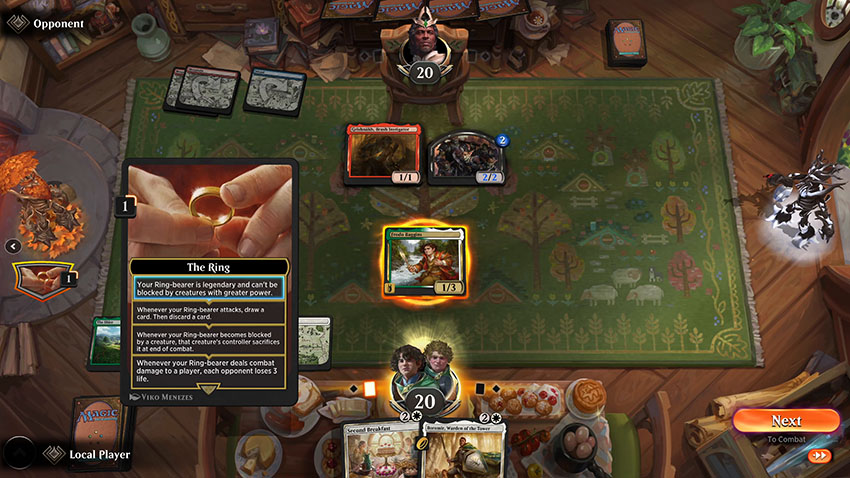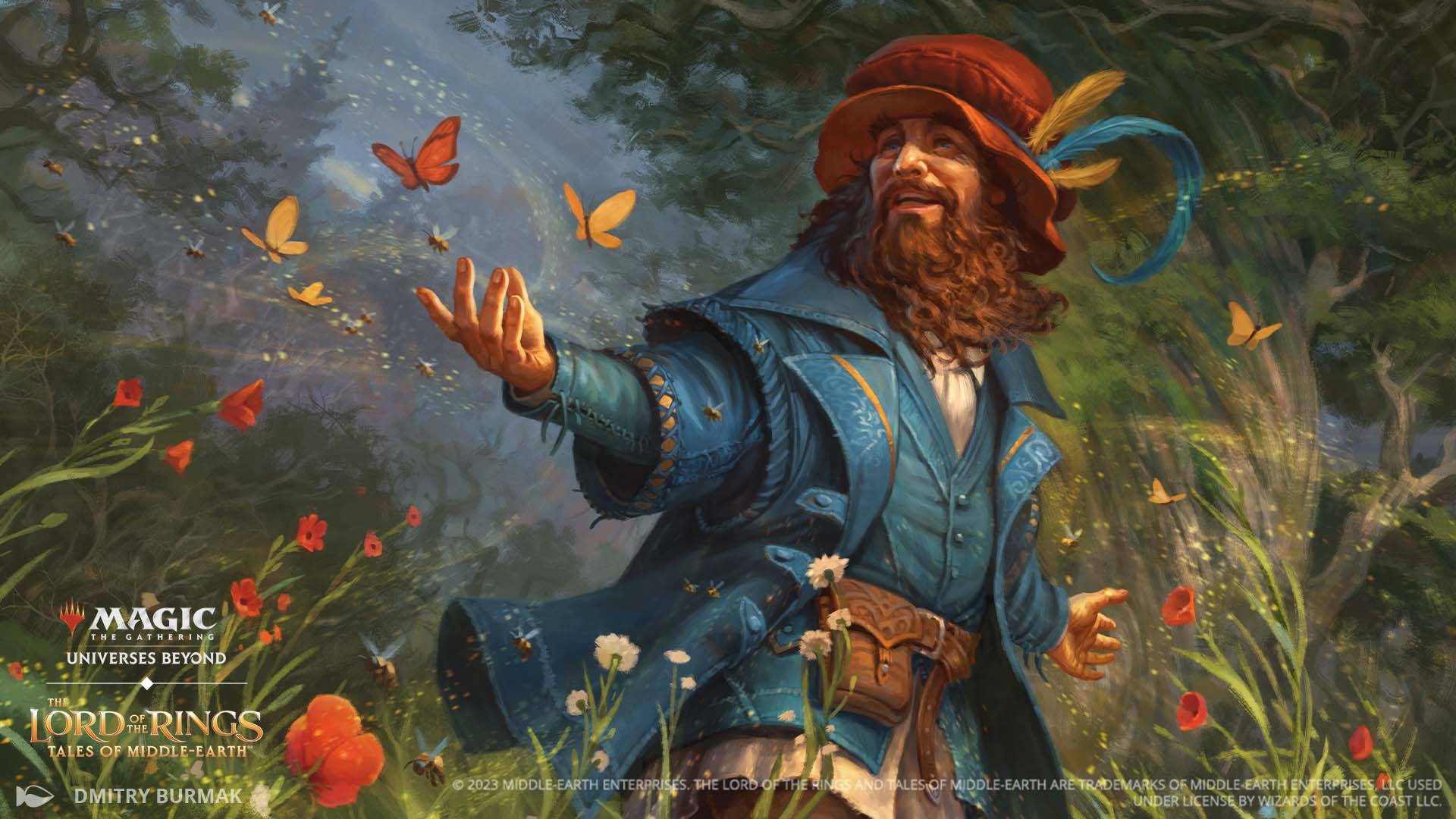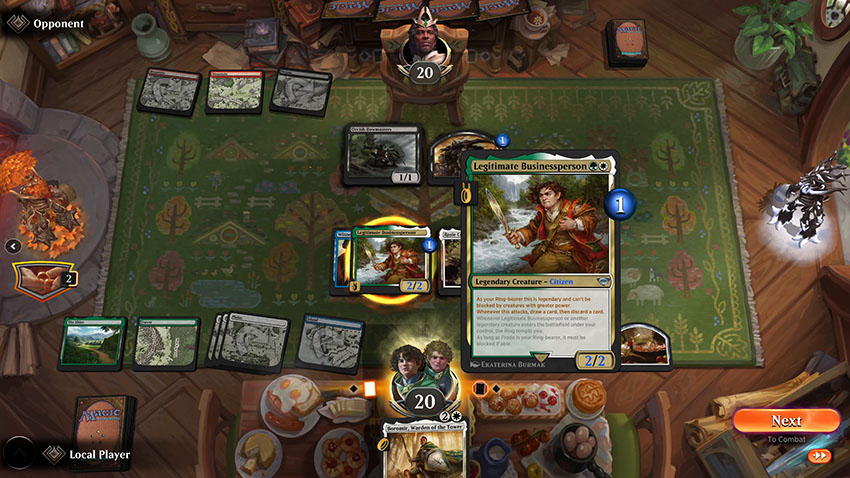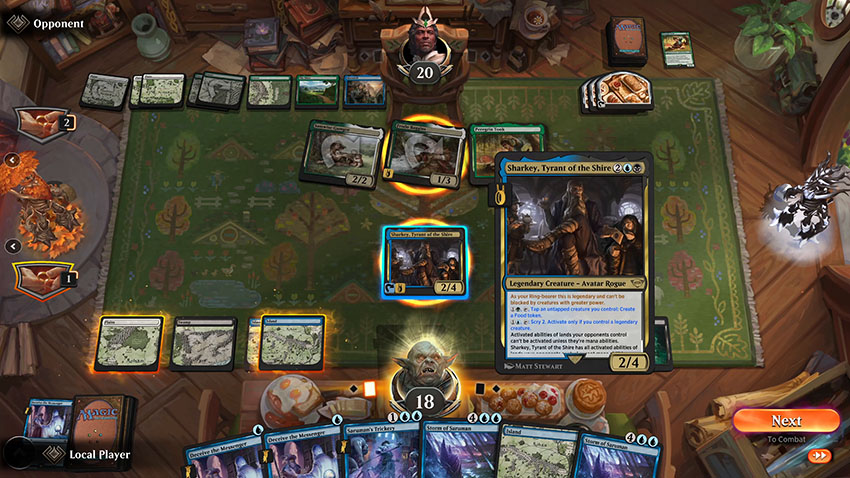The Ring Tempts You on MTG Arena
(Editor's Note: Join Ian Adams in a Magic Discord Q&A on Tuesday, July 11, beginning at 1 p.m. PT / 20:00 UTC.)
Design on MTG Arena is a constant tightrope walk. Magic is a very complicated game, and it is regularly increasing in complexity. Take the Defiler cycle in Dominaria United, such as

This brings us to The Lord of the Rings: Tales of Middle-earth™ and specifically the Ring tempts you mechanic. In gameplay, this ability is straightforward. But behind the scenes, the rules that make it work are novel and presented a real challenge to represent correctly on MTG Arena. Altogether, the ability does a handful of different things.
It Creates an Emblem, but Differently
Emblems have existed in Magic for over a decade.
*Pause to allow a subset of Magic players, myself included, to rapidly age like that Saving Private Ryan gif.*
In all that time, they have only been created by planeswalkers (yes, that counts Teferi's Talent, because the planeswalker is ultimately the source of the ability that creates the emblem). For the first time, we've got an emblem that isn't. It's created by all kinds of card types. What's more, it only ever creates the emblem once. People familiar with
It is reasonable at this point to ask the question, "Then why is it an emblem at all?" Obviously, I asked this as well, and frustratingly, there are a number of good answers around it. The design of the Ring tempts you wants the progress made to persist regardless of the survival of individual permanents on the battlefield. We have a handful of methods for doing that (cards like dungeons, for example), but emblems are by far the cleanest solution.

Unfortunately, presentation needs here are fundamentally different. Every other emblem has all the rules it will ever have up front. When a player mouses over them, they see the abilities it has. With the Ring tempts you, players on both sides of the battlefield also want to know what abilities it will have.
It Makes Non-Legendary Creatures Legendary
This is fine actually. We already support this. There's some VFX on it to call extra attention to the Ring-bearer designation, but this was zero additional work, so I'm just going to hang out in this paragraph for a second. Just chill with Tom Bombadil for a spell.

It Grants Abilities but Not Really
The rules reasons here are complicated, but it's important to understand that while the Ring tempts you has abilities that modify the behavior of your Ring-bearer, that creature never actually gains those abilities. Those abilities live on the emblem and modify game rules as they relate to the Ring-bearer. This means two important things:
- If your Ring-bearer loses all their abilities somehow (for example, by a
Witness Protection ), all the effects of the emblem created by the Ring tempts you remain. The creature itself never had those abilities in the first place. - The code in MTG Arena that puts gained abilities onto cards in blue text didn't add anything to Ring-bearers by default, because, again, they never actually gained any abilities.

So now we're back to the topic from the top of this: How do we balance necessary accuracy versus usable clarity? We recognized from the start that we'd need to do bespoke work to have the emblem display upcoming effects. But for the Ring-bearer, we initially seriously underestimated how aggressively we'd need to communicate the state of the emblem.
Most obviously, we've gone ahead and added text to the card that calls out the impact of the emblem. We went with gold text here rather than the normal blue because we didn't want to imply these were abilities the creature had gained. During initial internal discussion, this was controversial, as several people believed that, like the Phyrexian mana example from the opening, it was close enough that it was better to use blue text to avoid confusing players with a new text color. At the end of the day, the presence of

So how did it go? Did we make the right calls? Did we balance things in a way that was helpful to you as a player? Let me know! I'll be jumping on the Magic Discord Tuesday, July 11, at 1 p.m. PT to check in with folks and do some Q&A about MTG Arena generally. I hope to see you there!

